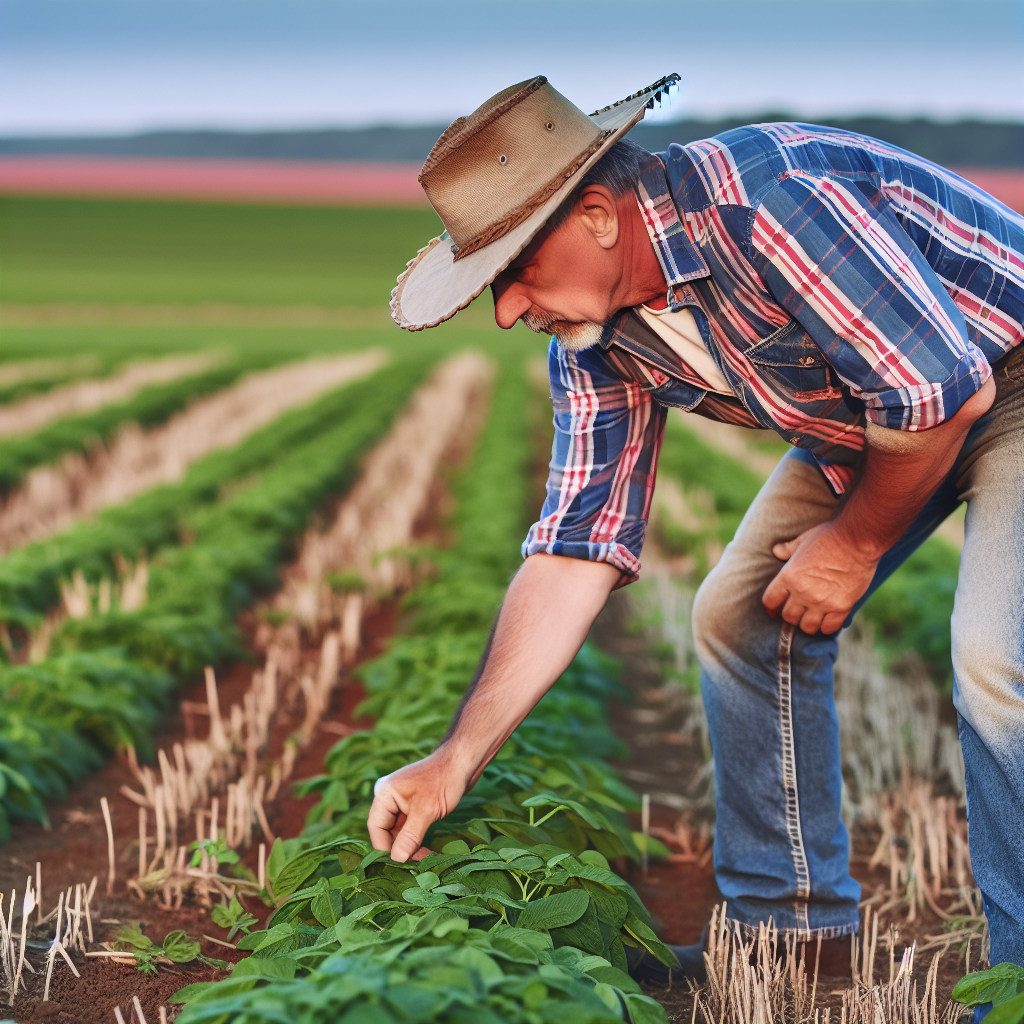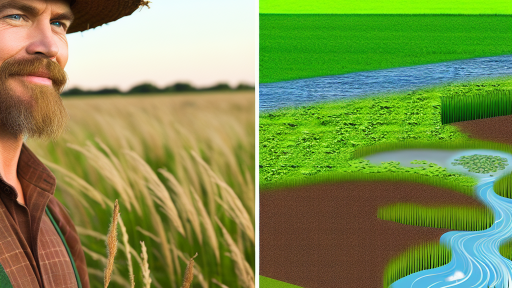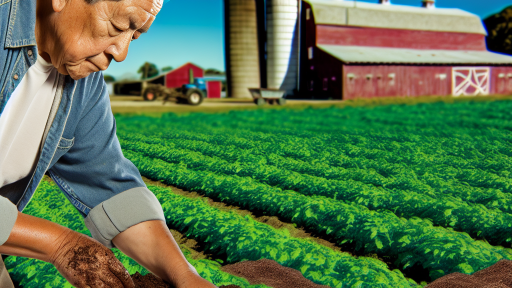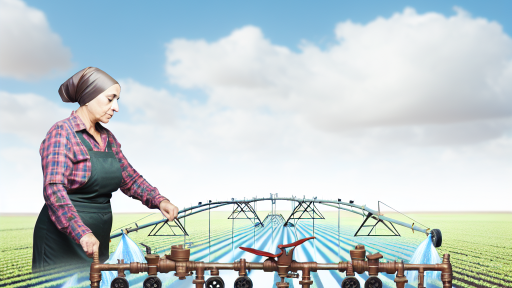Overview of Climate Variability and Its Impact on Agriculture
Defining Climate Variability
Climate variability refers to short-term fluctuations in climate patterns.
These variations can occur over days, months, or seasons.
They significantly impact temperatures, precipitation, and wind patterns.
Farmers must adapt to these changes to maintain crop yield.
Influencing Agricultural Productivity
Climate variability directly affects agricultural productivity.
Unpredictable weather can disrupt planting and harvesting schedules.
Droughts can reduce water availability for crops and livestock.
On the other hand, excessive rainfall can lead to soil erosion.
Both scenarios ultimately result in economic losses for farmers.
Economic Consequences of Climate Variability
Farmers face numerous economic challenges due to climate variability.
Fluctuating yields can lead to unstable income for agricultural producers.
Pricing instability commonly follows poor harvests.
As a result, many farmers struggle to invest in future crops.
Further, insurance costs rise as risks increase with climate events.
Long-Term Implications for the Farming Sector
Investing in adaptive technologies becomes essential for farmers.
Transform Your Agribusiness
Unlock your farm's potential with expert advice tailored to your needs. Get actionable steps that drive real results.
Get StartedInnovations can help in managing risks associated with climate variability.
For example, drought-resistant crops offer potential solutions.
Additionally, weather forecasting tools can enhance decision-making.
Nevertheless, long-term impacts will persist if climate patterns remain unstable.
Addressing Climate Variability in Farming Practices
Farmers must adopt sustainable practices to cope with climate variability.
Crop rotation and agroforestry can improve resilience.
Utilizing information technology can enhance precision in agricultural practices.
Such measures not only mitigate losses but also promote sustainability.
Proactive strategies are vital for the future of agriculture.
The Financial Implications of Crop Yield Fluctuations Due to Weather Changes
Understanding the Impact of Climate Variability
Climate variability significantly affects crop production around the globe.
Weather patterns, such as droughts and floods, increasingly disrupt agriculture.
These disruptions result in notable crop yield fluctuations.
Farmers face financial instability when yields decline unexpectedly.
Moreover, the economic pressures can ripple through rural communities.
Calculating Economic Losses
Estimating economic losses from crop yield changes involves several factors.
First, the market prices of crops fluctuate based on supply and demand.
Secondly, reduced harvests lead to increased market prices.
Farmers may struggle to manage their operating costs during such fluctuations.
The impact extends beyond individual farms to local economies.
Long-Term Financial Consequences
The long-term financial consequences of climate variability can be severe.
Farmers must adapt to these changes to remain profitable.
Investment in new technologies and sustainable practices becomes essential.
Moreover, financial institutions may face higher risks when lending to farmers.
Insurance companies adjust their policies based on observed vulnerabilities.
Showcase Your Farming Business
Publish your professional farming services profile on our blog for a one-time fee of $200 and reach a dedicated audience of farmers and agribusiness owners.
Publish Your ProfileStrategies for Mitigating Financial Risk
Farmers can employ various strategies to mitigate financial risks.
Diversifying crops can spread risk across different markets.
Additionally, utilizing crop insurance can safeguard against unexpected losses.
Moreover, investing in climate-resilient seed varieties proves beneficial.
Adopting sustainable farming practices can also enhance productivity over time.
Engaging with Support Systems
Farmers should engage with local and government support systems.
These systems often provide resources and guidance on best practices.
Community networks can also share valuable experiences and strategies.
Furthermore, collaborations with research institutions can enhance resilience.
Ultimately, proactive engagement can stabilize farmers during uncertain times.
Case Studies: Regions Most Affected by Climate Variability and Their Economic Losses
North America: The Midwest Corn Belt
The Midwest Corn Belt is highly vulnerable to climate variability.
Extreme weather events have drastically reduced yields in recent years.
For instance, drought conditions in 2021 cost farmers approximately $5 billion.
Additionally, unexpected frosts can devastate crops, especially in spring.
Farmers face ongoing challenges from shifting weather patterns.
Africa: The Sahel Region
The Sahel region is experiencing severe climate impacts.
Erratic rainfall patterns have led to food insecurity across the area.
In 2020 alone, agricultural losses were estimated at $1.3 billion.
Coping with desertification complicates farming practices significantly.
Local communities struggle to adapt to increasingly hostile conditions.
Australia: The Murray-Darling Basin
The Murray-Darling Basin faces serious economic challenges due to climate variability.
Water scarcity has crippled the region’s agricultural output.
In 2019, economic losses in this area exceeded $3.5 billion.
Farmers are having to make difficult choices about crop patterns.
Furthermore, prolonged droughts threaten the viability of entire farms.
Asia: India’s Punjab Region
Punjab is crucial for India’s agricultural output and faces climate threats.
Flooding and unseasonal rains have led to severe crop losses.
Economic impacts reached nearly $2 billion in 2020.
The region’s dependence on irrigation further complicates water management.
Farmers are increasingly struggling to maintain production levels.
Europe: Southern Spain
Southern Spain has seen significant agricultural impacts from climate change.
Increased temperatures lead to reduced yields of staple crops.
Economic losses in this region are estimated at around $1.5 billion annually.
Additionally, water shortages pose a persistent threat to farming.
Farmers are implementing new strategies to cope with these challenges.
Learn More: The Economic Case for Adopting Climate-Sensitive Farming
Quantifying Economic Losses
Importance of Assessment Tools
Assessing economic losses requires accurate tools and metrics.
Such tools help quantify the impacts of climate variability on farming.
For instance, the use of satellite imagery aids in evaluating crop health.
Additionally, weather data provides insights into climate patterns.
Showcase Your Farming Business
Publish your professional farming services profile on our blog for a one-time fee of $200 and reach a dedicated audience of farmers and agribusiness owners.
Publish Your ProfileBoth resources contribute to understanding the economic implications.
Commonly Used Metrics
Several metrics are crucial in assessing economic losses.
Yield loss is a primary factor to consider during evaluations.
Market prices also play a significant role in monetary assessments.
Furthermore, labor costs can increase due to climate-related impacts.
These metrics provide a comprehensive view of economic losses.
Data Collection Methods
Collecting accurate data is vital for reliable assessments.
Field surveys can capture specific loss information firsthand.
Remote sensing technologies offer broader insights from a distance.
Moreover, financial records help track historical loss patterns.
Using these methods ensures a thorough analysis of losses.
Modeling Economic Impacts
Models help simulate potential economic impacts from climate variability.
For example, econometric models analyze the relationship between variables.
These models can predict future losses based on current trends.
Moreover, scenario analysis helps visualize different climate futures.
Using models enhances decision-making for agricultural stakeholders.
Discover More: Investing In Climate Smart Farming Techniques
Adaptation Strategies for Farmers to Mitigate Economic Losses from Climate Variability
Understanding the Impact of Climate Variability
Climate variability significantly affects agricultural productivity.
Unexpected weather patterns can lead to crop failures.
Farmers must comprehend these impacts to develop effective strategies.
Implementing Sustainable Farming Practices
Sustainable farming practices enhance resilience against climate variability.
Crop rotation improves soil health and reduces pest pressures.
Additionally, cover crops protect against soil erosion.
These methods help maintain productivity during unpredictable weather.
Utilizing Technology for Better Forecasting
Farmers can use technology to forecast weather patterns accurately.
Advanced software provides timely updates on climatic conditions.
This information allows farmers to adjust planting schedules accordingly.
Investing in Irrigation and Water Management
Efficient irrigation systems help conserve water resources.
Farmers should adopt drip irrigation for better water savings.
This approach ensures crops receive adequate moisture during dry spells.
Diversifying Crop Choices
Diversifying crops can reduce risks associated with climate variability.
Planting various crops helps cushion against market fluctuations.
Farmers can adapt their product offerings based on seasonal conditions.
Building Financial Resilience
Farmers should explore crop insurance options for risk management.
Participating in government programs can provide additional support.
Establishing savings for emergency situations improves financial stability.
Engaging in Knowledge Sharing and Community Support
Farmers benefit from collaborating within their communities.
Participating in local agricultural groups fosters knowledge sharing.
Networking helps farmers learn about innovative practices and technologies.
See Related Content: Effective Flood Management Strategies for Farmers
Showcase Your Farming Business
Publish your professional farming services profile on our blog for a one-time fee of $200 and reach a dedicated audience of farmers and agribusiness owners.
Publish Your Profile
Policy Recommendations for Governments to Support Affected Farming Communities
Implement Financial Assistance Programs
Governments should establish financial assistance programs for farmers impacted by climate variability.
These programs can provide immediate relief during crisis periods.
Farmers can benefit from low-interest loans to support recovery efforts.
Grants for sustainable farming practices can also be introduced.
Emergency funds could help farmers prepare for future climate challenges.
Establish Sustainable Agriculture Incentives
Encouraging sustainable agricultural practices is essential.
Incentives should be offered to farmers who adopt eco-friendly techniques.
Programs promoting crop diversification can enhance resilience.
Funds can support farmers transitioning to organic farming methods.
Education initiatives should inform farmers about sustainable practices.
Enhance Research and Development Efforts
Investment in agricultural research is crucial for long-term solutions.
Government agencies should partner with universities to enhance research.
This collaboration can yield innovative farming techniques.
Research should focus on climate-resilient crop varieties.
Farming technologies should also be developed to address climate impacts.
Foster Community Engagement and Support
Community engagement is vital in developing effective policies.
Governments must involve local farmers in decision-making processes.
Support groups can provide emotional and practical assistance.
Workshops can promote shared experiences among farmers.
Collaborative efforts can lead to stronger community ties.
Implement Comprehensive Climate Risk Assessments
Comprehensive climate risk assessments should be mandatory for agricultural policies.
These assessments help identify vulnerable farming regions.
Data collection will guide targeted interventions.
Government agencies should work with local stakeholders for accurate assessments.
Ultimately, informed policy can enhance community preparedness.
Gain More Insights: Advanced Technologies in Agricultural Water Management
The Role of Technology and Innovation in Reducing Economic Risks Associated with Climate Variability
Integrating Smart Farming Techniques
Smart farming integrates technology into agricultural processes.
This approach enhances efficiency and reduces costs.
Farmers can utilize precision agriculture to optimize resource use.
For instance, drones can monitor crop health over large areas.
Moreover, sensors can provide real-time data on soil conditions.
Adopting Sustainable Practices
Sustainable practices mitigate the impacts of climate change.
Rotational grazing helps maintain healthy soil ecosystems.
Cover cropping prevents soil erosion and retains moisture.
These methods lead to increased resilience against climate variability.
Utilizing Weather Forecasting Tools
Advanced weather forecasting tools empower farmers to make informed decisions.
Accurate predictions allow for better planning of planting and harvesting.
Data analytics can identify optimal conditions for crop growth.
By doing so, farmers can significantly reduce losses due to adverse weather.
Investing in Research and Development
Investment in agricultural research fosters innovation.
Showcase Your Farming Business
Publish your professional farming services profile on our blog for a one-time fee of $200 and reach a dedicated audience of farmers and agribusiness owners.
Publish Your ProfilePublic and private sectors play crucial roles in this field.
Developing new crop varieties increases resilience to stresses.
Furthermore, research improves pest and disease management strategies.
Collaboration and Knowledge Sharing
Collaboration among farms enhances knowledge sharing.
Farmers can learn from each other’s experiences and successes.
Community-based initiatives promote the adoption of best practices.
This collective knowledge can drive innovation forward.
Technological Advances in Irrigation
Modern irrigation techniques optimize water use dramatically.
Drip and sub-surface irrigation reduce water wastage.
These methods also minimize the threat of runoff and soil salinization.
Consequently, farmers can sustain yields even during droughts.
Impact of Biotechnology
Biotechnology offers solutions to address climate-induced challenges.
Genetically modified organisms can withstand harsh environmental conditions.
This ensures crop survival in unpredictable climates.
As a result, agricultural productivity can remain stable or increase.
Long-term Projections: Future Economic Impact of Climate Change on Global Agriculture
Overview of Climate Change Effects
Climate change significantly alters agricultural productivity across the globe.
Temperatures are steadily rising, impacting crop yields negatively.
Additionally, increasing frequency of extreme weather events disrupts farming activities.
Farmers face challenges like droughts and floods that threaten their livelihoods.
Furthermore, changing precipitation patterns complicate water management for irrigation.
Projected Economic Losses
Experts estimate that global agricultural losses could reach billions annually.
Regions dependent on agriculture may experience more pronounced economic effects.
For instance, Sub-Saharan Africa faces a potential crop yield decline of up to 50% by 2050.
This decline will severely impact food security in vulnerable communities.
Moreover, increased input costs from climate adaptation measures will strain farmers’ budgets.
Sector-Specific Impacts
Certain agricultural sectors will bear the brunt of climate variability.
For example, the coffee industry may see lower quality and quantity of beans.
Similarly, the wine industry may struggle due to temperature shifts affecting grape cultivation.
Furthermore, fisheries will experience changes in fish populations and migratory patterns.
Long-term Adaptation Strategies
Farmers must adopt innovative practices to cope with climate impacts.
These practices include crop diversification and sustainable farming techniques.
Additionally, investing in resilient crop varieties will enhance food security.
Moreover, integrating technology into agriculture can improve efficiency and reduce waste.
Global Collaboration and Policy Imperatives
International cooperation is essential to address climate challenges in agriculture.
Policies must promote sustainable practices and support farmer adaptation efforts.
A collective approach can mitigate potential economic losses in agriculture.
Governments should prioritize funding for research on climate-resilient crops.
Enhancing global agricultural resilience is critical to ensuring food security.
Additional Resources
Climate Impacts on Agriculture and Food Supply | Climate Change …
Climate Change Projected To Increase Cost of the … – USDA ERS
Showcase Your Farming Business
Publish your professional farming services profile on our blog for a one-time fee of $200 and reach a dedicated audience of farmers and agribusiness owners.
Publish Your Profile



